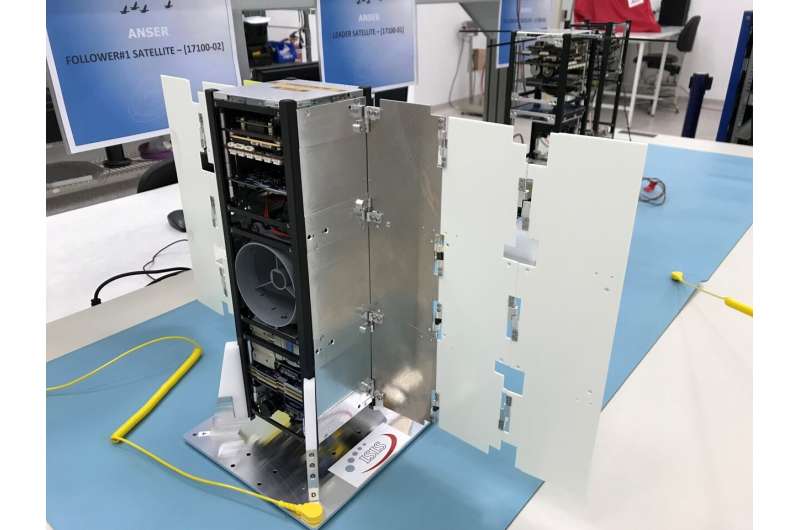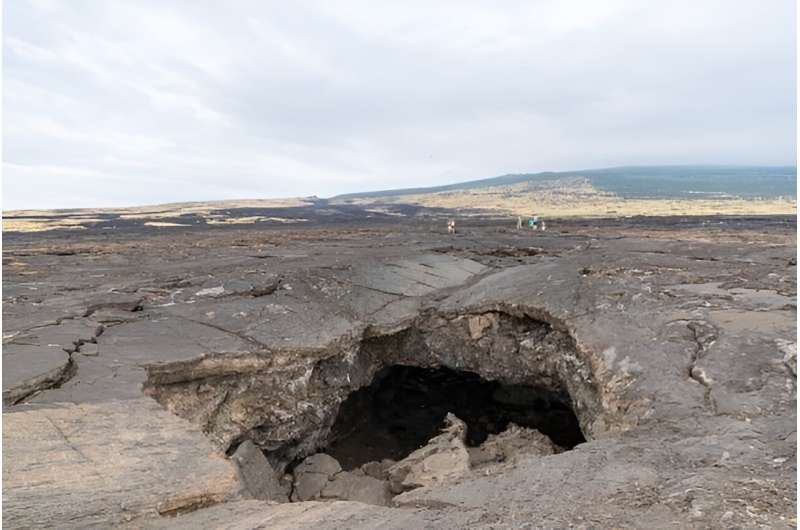
Copernical Team
Moon and Mars test site for robotic missions
 The Moon and Mars are stated targets of European and international space exploration. However, before humans embark on these journeys, robots will explore inhospitable areas, develop local resources and prepare for the landing of astronauts as comprehensively as possible.
Exploration missions with autonomous mobile robots will therefore increase significantly in the coming years. To facili
The Moon and Mars are stated targets of European and international space exploration. However, before humans embark on these journeys, robots will explore inhospitable areas, develop local resources and prepare for the landing of astronauts as comprehensively as possible.
Exploration missions with autonomous mobile robots will therefore increase significantly in the coming years. To facili Sierra Space increases total investment to $1.7B with $290M Series B Funding
 Sierra Space, a leading pureplay commercial space company building the first end-to-end business and technology platform in space with $3.4 billion in customer contracts, announced today it has closed a $290 million Series B funding round. The round brings the company's total capital raised to $1.7 billion, the largest ever capital raise by a commercial space company over the combined Series A a
Sierra Space, a leading pureplay commercial space company building the first end-to-end business and technology platform in space with $3.4 billion in customer contracts, announced today it has closed a $290 million Series B funding round. The round brings the company's total capital raised to $1.7 billion, the largest ever capital raise by a commercial space company over the combined Series A a Intelsat expands Brazil infrastructure, delivers new services
 Intelsat, operator of one of the world's largest integrated satellite and terrestrial networks and leading provider of inflight connectivity (IFC), has launched new services in Brazil that combine local support, new teleport facilities, and broader satellite coverage to deliver connectivity services to more users across the region.
All of the assets, technology and infrastructure in Brazil
Intelsat, operator of one of the world's largest integrated satellite and terrestrial networks and leading provider of inflight connectivity (IFC), has launched new services in Brazil that combine local support, new teleport facilities, and broader satellite coverage to deliver connectivity services to more users across the region.
All of the assets, technology and infrastructure in Brazil Monitoring of radio galaxy M87 confirms black hole spin
 The nearby radio galaxy M87, located 55 million light-years from the Earth and harboring a black hole 6.5 billion times more massive than the Sun, exhibits an oscillating jet that swings up and down with an amplitude of about 10 degrees, confirming the black hole's spin.
The study, which was headed by Chinese researcher Dr. CUI Yuzhu and published in Nature on Sept. 27, was conducted by an
The nearby radio galaxy M87, located 55 million light-years from the Earth and harboring a black hole 6.5 billion times more massive than the Sun, exhibits an oscillating jet that swings up and down with an amplitude of about 10 degrees, confirming the black hole's spin.
The study, which was headed by Chinese researcher Dr. CUI Yuzhu and published in Nature on Sept. 27, was conducted by an New Simulations Shed Light on Origins of Saturn's Rings and Icy Moons
 On a clear night, with a decent amateur telescope, Saturn and its series of remarkable rings can be seen from Earth's surface. But how did those rings come to be? And what can they tell us about Saturn and its moons, one of the potential locations NASA hopes to search for life? A new series of supercomputer simulations has offered an answer to the mystery of the rings' origins - one that involve
On a clear night, with a decent amateur telescope, Saturn and its series of remarkable rings can be seen from Earth's surface. But how did those rings come to be? And what can they tell us about Saturn and its moons, one of the potential locations NASA hopes to search for life? A new series of supercomputer simulations has offered an answer to the mystery of the rings' origins - one that involve Two Russians, American land back on Earth after ISS mission: Moscow
 Two Russian cosmonauts and an American astronaut landed back on Earth Wednesday after spending a year at the International Space Station (ISS), Russia's Roscosmos space agency said.
"Roscosmos cosmonauts Sergei Prokopyev and Dmitry Petelin and NASA astronaut Francisco Rubio, who spent a year on board the ISS landed near the city of Jezkazgan in Kazakhstan," Roscosmos said.
It said the
Two Russian cosmonauts and an American astronaut landed back on Earth Wednesday after spending a year at the International Space Station (ISS), Russia's Roscosmos space agency said.
"Roscosmos cosmonauts Sergei Prokopyev and Dmitry Petelin and NASA astronaut Francisco Rubio, who spent a year on board the ISS landed near the city of Jezkazgan in Kazakhstan," Roscosmos said.
It said the Plot thickens in the hunt for a ninth planet
 How many planets are there in the solar system? What laws govern their motion? These questions of antiquity led to the birth of astronomy and the dawn of science. Even today in the twenty-first century, the solar system may harbor secrets that could lead to insights about the universe on much larger scales.
In an article published in the Astronomical Journal last week, physicists report th
How many planets are there in the solar system? What laws govern their motion? These questions of antiquity led to the birth of astronomy and the dawn of science. Even today in the twenty-first century, the solar system may harbor secrets that could lead to insights about the universe on much larger scales.
In an article published in the Astronomical Journal last week, physicists report th Blue Origin to remain grounded for now following crash probe
 US aviation regulators said Wednesday that Blue Origin must complete "21 corrective actions" before it can resume launches, closing a probe into an uncrewed crash last year that set back Jeff Bezos's space company.
The Federal Aviation Administration report into the September 12, 2022 "mishap" said failure of an engine nozzle caused by higher-than-expected engine operating temperatures cause
US aviation regulators said Wednesday that Blue Origin must complete "21 corrective actions" before it can resume launches, closing a probe into an uncrewed crash last year that set back Jeff Bezos's space company.
The Federal Aviation Administration report into the September 12, 2022 "mishap" said failure of an engine nozzle caused by higher-than-expected engine operating temperatures cause Vega's fuel-free CubeSats will use wings to keep in formation

Spain's trio of ANSER CubeSats, due to fly on Europe's next Vega launcher, will fly like a flock of birds in orbit—in more ways than one. Keeping in formation by following their leader, the three shoebox-sized satellite will image Iberian waters as if they are a single standard-sized mission. And they will unfurl wing-like flaps to maintain their relative positions, surfing on the scanty airflow at the top of Earth's atmosphere.
ANSER—Advanced Nanosatellite Systems for Earth-observation Research—is a cluster of three CubeSats which will work together in close vicinity as if they are a single satellite. Due to be launched on Europe's next Vega flight, VV23, the ANSER mission is being undertaken by INTA, the Spanish Institute of Aerospace Technology.
Santiago Rodriguez Bustabad, overseeing the mission, explains, "ANSER is also the Latin name for the wild goose, a good example of birds flying in formation, adopting a leader-follower protocol, which is what our mission is emulating."
These three-unit CubeSats will orbit around 500 km altitude, maintaining formation at an optimum 10 km apart from each other. But they do not have any onboard propulsion systems.
Chinese astronauts may build a base inside a lunar lava tube

Caves were some of humanity's first shelters. Who knows what our distant ancestors were thinking as they sought refuge there, huddling and cooking meat over a fire, maybe drawing animals on the walls. Caves protected our ancient ancestors from the elements, and from predators and rivals, back when sticks, stones, furs and fire were our only technologies.
So there's a poetic parallel between early humans and us. We're visiting the moon again, and lunar caves could shelter us the way caves sheltered our ancestors on Earth.
On the moon, astronauts will need protection from a different set of hazards. They'll have to contend with cosmic and solar radiation, meteorites, wild temperature swings, and even impact ejecta.

